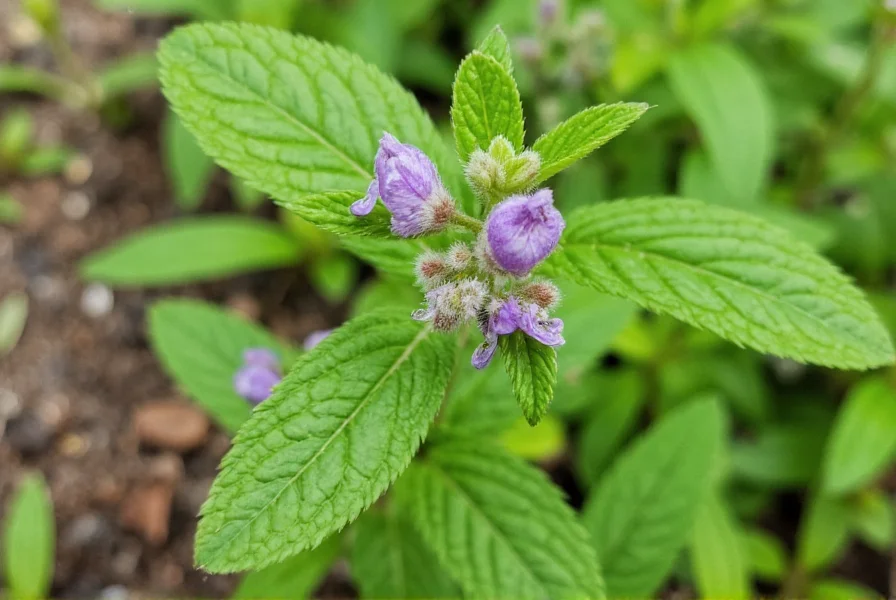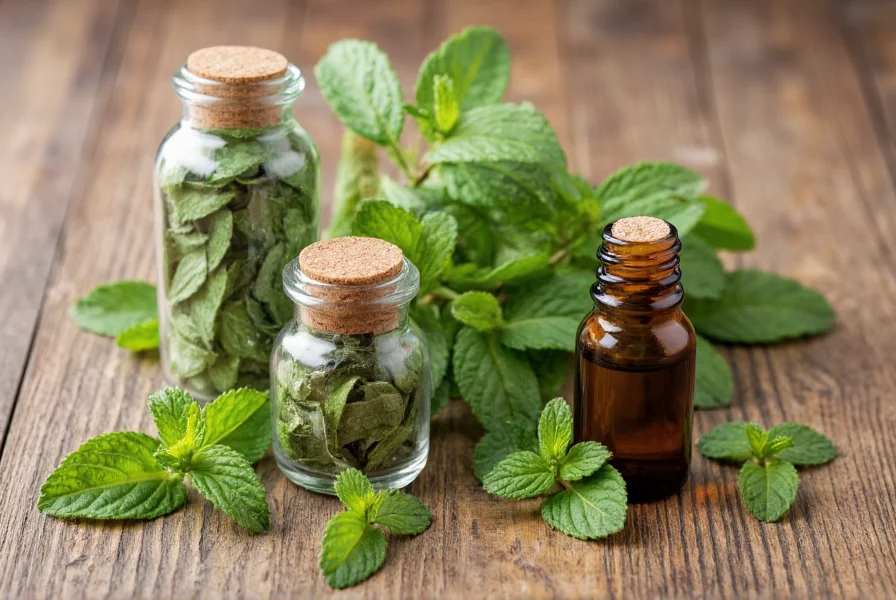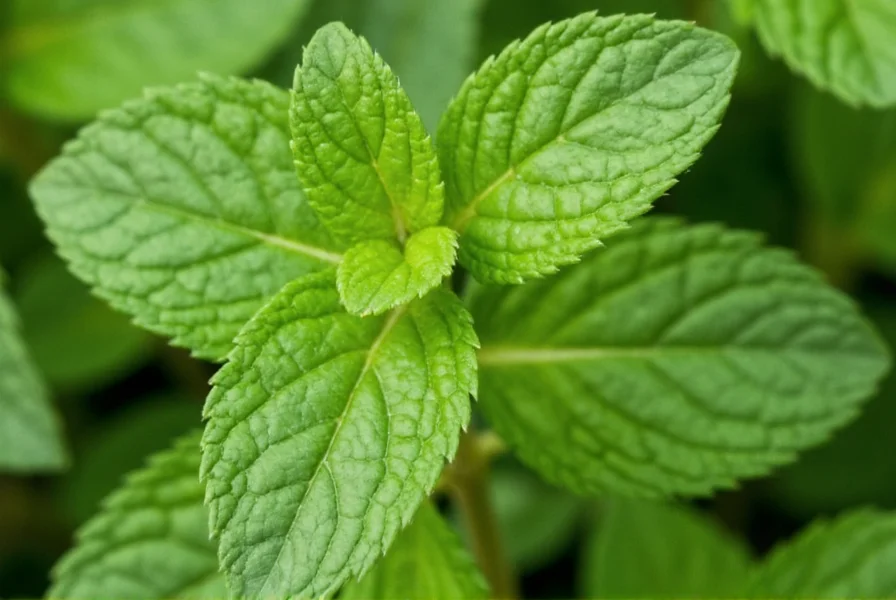Understanding Peppermint: Nature's Versatile Herb
Peppermint stands as one of the most widely used medicinal plants globally, with documented applications spanning thousands of years. This perennial herb thrives in temperate climates and features smooth, square stems with serrated leaves that emit a powerful aroma when crushed. The plant typically grows 12-36 inches tall and produces small purple or white flowers during summer months.
Peppermint vs Mint: Key Differences
Many people confuse peppermint with generic "mint," but significant distinctions exist. While all peppermint varieties are mints, not all mints are peppermint. The critical difference lies in menthol concentration:
| Characteristic | Peppermint | Spearmint |
|---|---|---|
| Menthol Content | 30-50% | 0.5% or less |
| Primary Compound | Menthol | Carvone |
| Flavor Profile | Sharp, cooling | Sweet, mild |
| Botanical Name | Mentha × piperita | Mentha spicata |
Historical Significance and Global Cultivation
Archaeological evidence shows peppermint use dating back to ancient Egyptian civilizations, where it appeared in temple offerings around 1000 BC. Greek and Roman cultures later adopted peppermint for medicinal and culinary purposes. Today, major commercial production occurs in the United States (particularly Oregon and Washington), Europe, and Asia. The plant prefers moist, shaded environments but demonstrates remarkable adaptability to various growing conditions.
Research-Backed Health Applications
Modern scientific research supports several therapeutic uses of peppermint. Clinical studies published in the Journal of Gastroenterology demonstrate that enteric-coated peppermint oil capsules effectively reduce irritable bowel syndrome symptoms in 75% of patients. The menthol content creates a cooling sensation by activating TRPM8 receptors in the skin and mucous membranes, explaining its widespread use in topical pain relief products.
When considering what is peppermint good for, research indicates benefits for:
- Digestive health support
- Muscle pain relief
- Headache management
- Respiratory function improvement
- Mental focus enhancement
Culinary Applications Beyond Tea
While peppermint tea remains popular, this herb offers diverse culinary possibilities. Chefs utilize fresh peppermint leaves in Middle Eastern dishes like tabbouleh and lamb preparations. The intense flavor means you should use peppermint sparingly compared to milder mints. For optimal flavor extraction in beverages, bruise the leaves before steeping to release essential oils. When cooking with peppermint essential oil uses, remember that just 1-2 drops equals approximately 1 tablespoon of fresh leaves due to concentration differences.
Successful Peppermint Cultivation Techniques
Learning how to grow peppermint plants requires understanding their invasive nature. This hybrid spreads aggressively through underground rhizomes, making container gardening the recommended approach for most home growers. Plant in partial shade with well-draining soil, maintaining consistent moisture without waterlogging. Harvest leaves in the morning when essential oil concentration peaks. For continuous production, cut stems back to 1-2 inches above soil level after flowering.

Safety Considerations and Potential Side Effects
Despite its widespread use, peppermint requires caution in certain situations. Pure peppermint oil can cause skin irritation when applied undiluted. When exploring is peppermint safe during pregnancy, consult your healthcare provider as high doses may stimulate menstruation. Children under 8 should avoid peppermint oil due to potential respiratory complications. Those with GERD should consume peppermint cautiously as it may relax the lower esophageal sphincter.
Preservation Methods for Year-Round Use
Extend your peppermint harvest through proper preservation. Air-drying maintains flavor better than oven drying, which can degrade volatile compounds. For maximum potency retention, freeze whole leaves in ice cube trays with water. When creating homemade peppermint tea health benefits preparations, use water just below boiling point (190°F/88°C) to prevent bitterness from over-extraction.

Integrating Peppermint Into Daily Wellness
Incorporating peppermint into your routine offers simple wellness benefits. Adding fresh leaves to water creates naturally flavored hydration. For mental clarity during work sessions, inhale crushed leaves or use a diffuser with diluted peppermint oil. When addressing digestive discomfort, steep 1-2 teaspoons of dried leaves in hot water for 5-7 minutes. Remember that peppermint plant care tips include regular pruning to maintain plant health and maximize leaf production.
Frequently Asked Questions
What distinguishes peppermint from other mint varieties?
Peppermint contains significantly higher menthol content (30-50%) compared to spearmint (less than 1%). This creates its characteristic cooling sensation and stronger flavor profile. Peppermint also features darker green leaves with purple veins and produces purple flowers, while spearmint has lighter green foliage and pink flowers.
Can you grow peppermint indoors successfully?
Yes, peppermint grows well indoors when placed in a container with drainage holes, using well-draining potting mix. Position it in bright, indirect light (4-6 hours daily) and maintain consistent soil moisture. Indoor plants benefit from monthly feeding with balanced liquid fertilizer during growing season. Regular harvesting encourages bushier growth.
How does peppermint tea affect digestion?
Peppermint tea relaxes gastrointestinal tract muscles through its menthol content, which can alleviate symptoms of irritable bowel syndrome, bloating, and indigestion. Research shows it may reduce spasms in the colon and improve bile flow. However, those with GERD should consume it cautiously as it might worsen acid reflux symptoms in some individuals.
What's the proper way to harvest peppermint for maximum potency?
Harvest peppermint in the morning after dew evaporates but before midday heat, when essential oil concentration peaks. Cut stems just above a leaf node, removing no more than one-third of the plant at a time. For best flavor and aroma retention, harvest before flowering occurs. Immediately use or process harvested mint, as potency decreases rapidly after picking.
Are there any medication interactions with peppermint?
Peppermint may interact with certain medications including cyclosporine (reducing its effectiveness), antacids (potentially worsening heartburn), and medications metabolized by the liver. The menthol content can increase absorption of some topical medications. If taking prescription medications, consult your healthcare provider before using peppermint therapeutically, especially in oil form.











 浙公网安备
33010002000092号
浙公网安备
33010002000092号 浙B2-20120091-4
浙B2-20120091-4